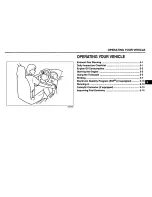
Cadillac XT4 Owner Manual (GMNA-Localizing-Europe-16412942) - 2023 -
CRC - 5/25/22
Vehicle Care
289
cold, meaning the vehicle has not been
driven for at least three hours or no
more than 1.6 km (1 mi).
Remove the valve cap from the tyre
valve stem. Press the tyre gauge firmly
onto the valve to get a pressure
measurement. If the cold tyre inflation
pressure matches the recommended
pressure on the Tyre and Loading
Information label, no further adjustment
is necessary. If the inflation pressure is
low, add air until the recommended
pressure is reached. If the inflation
pressure is high, press on the metal
stem in the centre of the tyre valve to
release air.
Recheck the tyre pressure with the tyre
gauge.
Refit the valve caps on the valve stems
to keep out dirt and moisture. Use only
valve caps designed for the vehicle by
GM. TPMS sensors could be damaged
and would not be covered by the
vehicle warranty.
Tyre Pressure for High-Speed
Operation
{
Warning
Driving at high speeds, 160 km/h
(100 mph) or higher, puts additional
strain on tyres. Sustained high-speed
driving causes excessive heat build-up and
can cause sudden tyre failure. This could
cause a crash, and you or others could be
killed. Some high-speed rated tyres
require inflation pressure adjustment for
high-speed operation. When speed limits
and road conditions allow the vehicle to
be driven at high speeds, make sure the
tyres are rated for high-speed operation,
are in excellent condition, and are set to
the correct cold tyre inflation pressure for
the vehicle load.
Vehicles with tyre sizes listed in the High
Speed Operation Inflation Pressures table
require inflation pressure adjustment when
driving the vehicle at speeds of 160 km/h
(100 mph) or higher. Set the cold tyre
inflation pressure to the corresponding value
in the table for the tyre size on the vehicle.















































